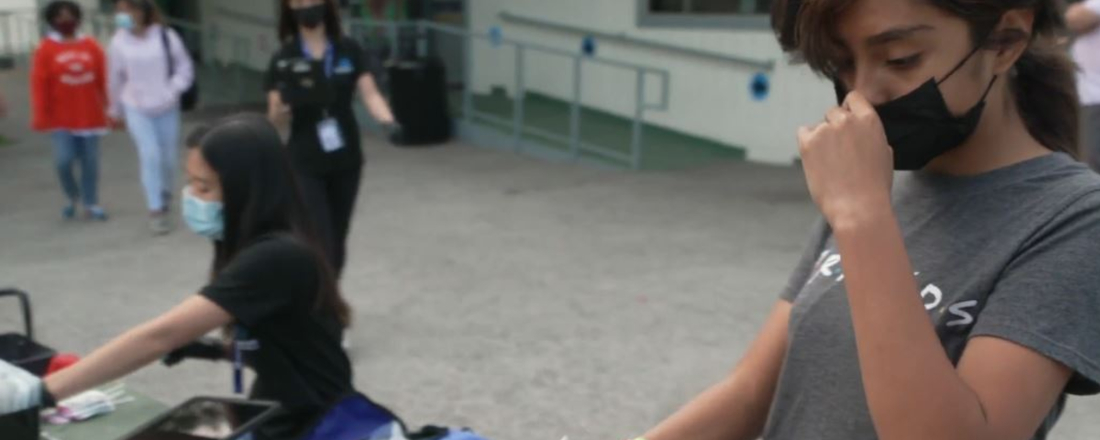
In the News
COVID-19 Questions as Kids Return to School
- Science News
-
Focus Areas
Communicable Disease Prevention -
Issues
School-based Efforts -
Expertise
Public-Private Partnerships -
Programs
Lynn Silver, Researcher, Safely Opening Schools -
Strategic Initiatives
COVID-19

Last fall, my husband and I managed our children’s first run-of-the-mill cold masquerading as COVID-19 with ease. We took them for the requisite tests and waited for the results. Meanwhile, the kids stayed home from school, using screens to answer math problems or watch educational programming. At least schools in Vermont, where we live, were mostly open, we said. At least the kids were getting some in-person education and social interaction. At least we were getting some uninterrupted work time.
Then we got our first “close contact” call from school, informing us that someone who had been near one of our kids had tested positive for COVID-19. We were told to wait seven days after exposure and then get a test or wait 10 days with no test before sending them back to school. Soon came the second call. Then a mystery case of diarrhea. The missed school days started piling up. Our ease became uneasy. As schools across the country reopen this fall, our rocky experience serves as an example of what other families could go through.
“Large numbers of students are going to be vulnerable to frequent quarantines,” says pediatric infectious diseases specialist Adam Hersh of the University of Utah in Salt Lake City. “That is going to be incredibly disruptive.”
In some ways, opening schools this year is even more precarious than last fall. The super contagious delta variant has become the dominant coronavirus strain across the United States. Some medical experts are predicting an uptick of colds and other seasonal respiratory illnesses that have symptoms mirroring those of COVID-19, which could mean even more missed school as kids wait for the all clear. And few states are requiring protective masks, even for unvaccinated students, while several states have even banned school districts from issuing mask mandates.
Besides masking, what else can schools do?
Deploy widespread preventive screening of all students, whether symptomatic or not, says pediatrician Lynn Silver of Berkeley, Calif. Silver is referring to rapid antigen tests, which deliver results in 15 minutes. Children as young as age 3 or 4 can administer these tests themselves, Silver says. And federal funding is available to interested districts.
Silver directs the Safely Opening Schools project, a collaboration between the Public Health Institute, headquartered in Oakland, Calif., and the California Department of Public Health. She headed a screening project from January to July across 10 school districts in five California counties. Schools generally tested students, who all wore masks, once or twice per week, and administered almost 100,000 tests.
The team found that positive cases within schools remained extremely low, with only a 0.1 percent of over 27,000 tests in the pilot study coming back positive. Subsequent PCR testing, a more accurate but slower testing method, revealed few false positives. The screenings also helped ease parents’ concerns, with some 90 percent saying that the tests helped them feel more comfortable with in-person schooling.
Most experts concur that even with the highly transmissible delta variant of the coronavirus circulating in the country, schools should remain open. But COVID-19 mitigation measures become that much more important.
Silver says the tests are considerably more effective at identifying positive cases than current protocols, such as symptom and temperature checks.

Screening is particularly valuable in elementary schools where all the kids are unvaccinated. Schools were relatively safe places, even during the height of the pandemic. We don’t want to tell anyone to keep their kid home out of fear. But they can be made safer by strong masking policies and by use of testing,Dr. Lynn Silver, PHI
Click below to read the full story in Science News.
Originally published by Science News
More Updates
Work With Us
You change the world. We do the rest. Explore fiscal sponsorship at PHI.
Support Us
Together, we can accelerate our response to public health’s most critical issues.
Find Employment
Begin your career at the Public Health Institute.



